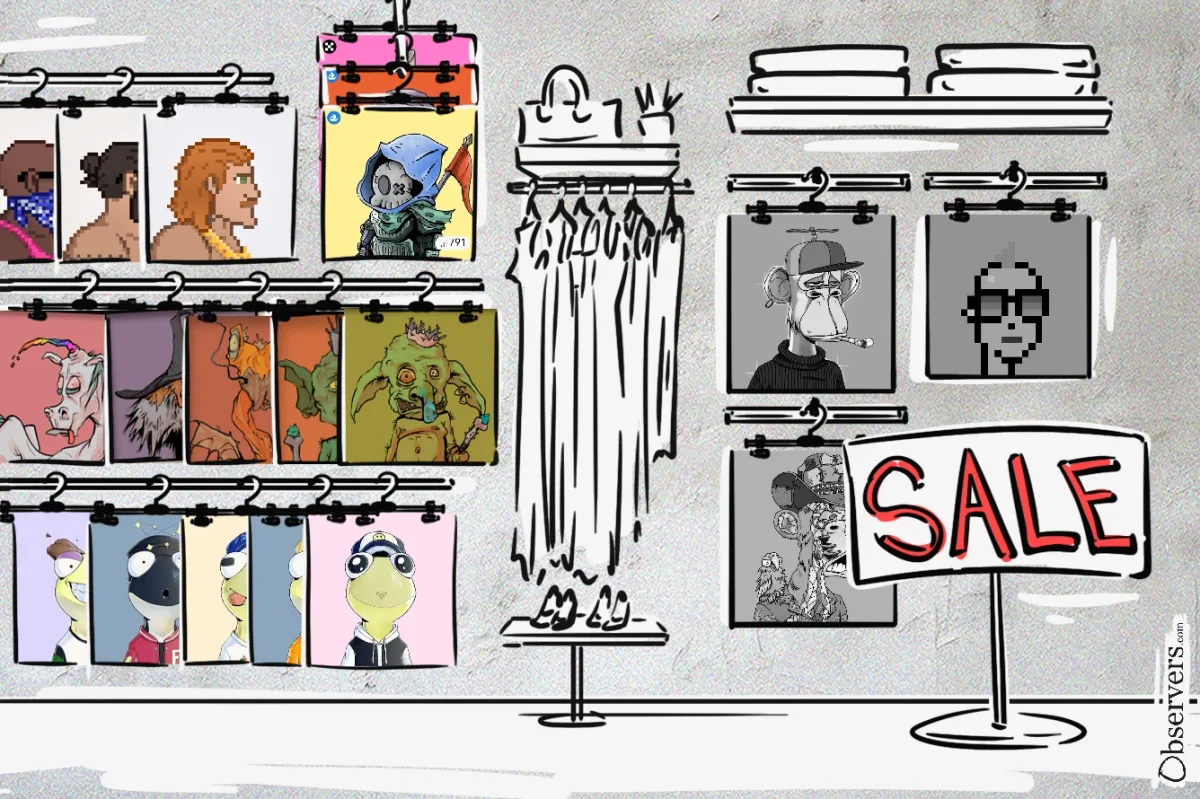
From being a luxury market catering to the Bitcoin-rich and super-wealthy celebrities, the non-fungible token business is becoming affordable and accessible to a larger and more diverse market.
Opportunities for small-scale investors have multiplied as the price of iconic collections falls and new collections show up on marketplaces at reasonable prices.
While the market's monetary value has decreased substantially, all other aspects that made NFTs a promising investment back then - fungibility, direct ownership, portability, community, and artistic innovation - remain the same or have strengthened.
The Fall From The Top Shelf
In 2021, the NFT market exploded. For over a year, it attracted hundreds of talented artists, passionate collectors, and ferocious speculators. Then, it cooled down spectacularly.
According to data from Statista, the market's capitalization went from $12,476 million at the start of August 2022 to $7,681 million two years later.
The Bitwise Blue-Chip NFT Index Fund, launched by the U.S. crypto-focused asset management firm at the height of the NFT market hype in December 2021, has lost 77.1% of its value.
Historical Expensive Collections At Low Prices
The total sales of Bored Ape Yacht Club tokens in July 2024 were $9,317 million, the lowest value since the 10,000 funky primates appeared to the public in April 2021 and 72% lower than they were three months ago. At 9.19 ETH ($23,179), the price floor is at the same level as during the ape's first month of existence.
While it is still expensive, it is also cheaper than it ever was (in Ether).
Mutant Ape Yacht Club, the spin-off of BAYC, is following the same trajectory. For the last three months, the sales volume has been at historic lows, with a tendency to continue falling. In May, total sales were $6,742 million; in June, $6,361 million; and in July, MAYC sales volume was $3,507 million. Currently, the floor price of the collection is 1.44 ETH (around $3,32).
Azuki, one of the top collections of 2022, also registered the lowest volume of sales ever—$3,924 million—last month. On June 22, the crypto, zen, and anime aesthetics-inspired collection hit the lowest floor price on record, 2.74 ETH.
Even Crypto Punks didn't survive the downward trend. The first and most iconic Ethereum collection had a lower sales volume than in July, $7 721 million, since January 2021.
New Collections
Even after the NFT bubble burst in 2022, artists kept coming up with new ideas and projects teams found in non-fungible tokens as a way to promote their work and foster their communities.
While most collections launched before or during the hype were on Ethereum, recent NFTs exist on multiple platforms. They also serve different purposes and have very diverse ambitions and expected outcomes.
The CHADS Solana collection, whose community banner is "Don't let your memes be dreams," is creating a whole ecosystem. After launching the meme-coin $YES, they are moving on their "Broadmap" to establish YesDAO. Their floor price is 0.98 SOL ($133).
On Ethereum, the goblintown.wtf, with a floor price of 0.08 ETH, is quite the opposite. According to their website, the project has "No roadmap. No Discord. No utility," existing simply as a degen art collection on-chain.
Also on Solana is Frogana, a collection of 5555 "humanoid frogs" created by Trigon Studios and minted for the first time in December 2023 at 0.01 SOL. The collection has become popular due to its alleged cuteness and is now worth 1.22 SOL.
The Nethers collection, currently being sold on Arbitrum, is the genesis NFT of Over Protocol, a decentralized ecosystem focused on inclusivity about to be launched. The network is using the NFTs to foster adoption before launch by distributing tokens to the users who purchased the collection's tokens.
There is an array of even more affordable NFTs than these, some simply being on-chain art and others with use cases in gaming, protocols, and other such fields.
Markets move in ways that are only occasionally related to the intrinsic characteristics of their products, and the evolution of the demand for non-fungible tokens is a prime example of these inconsistent money cycles.

